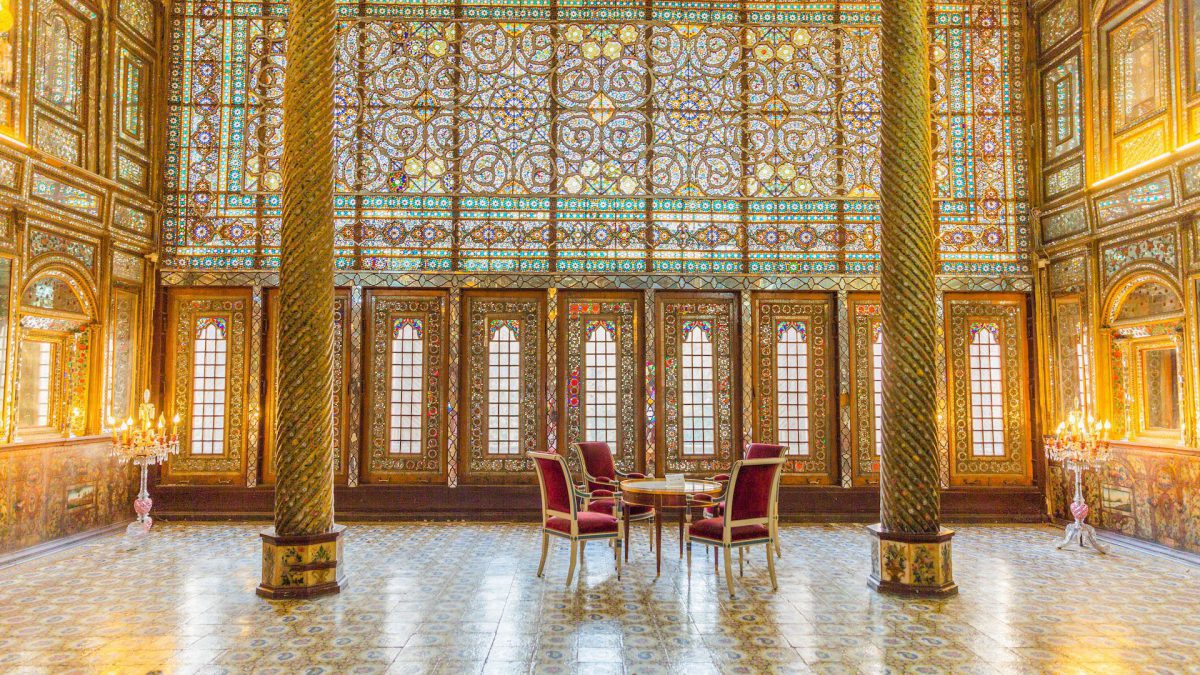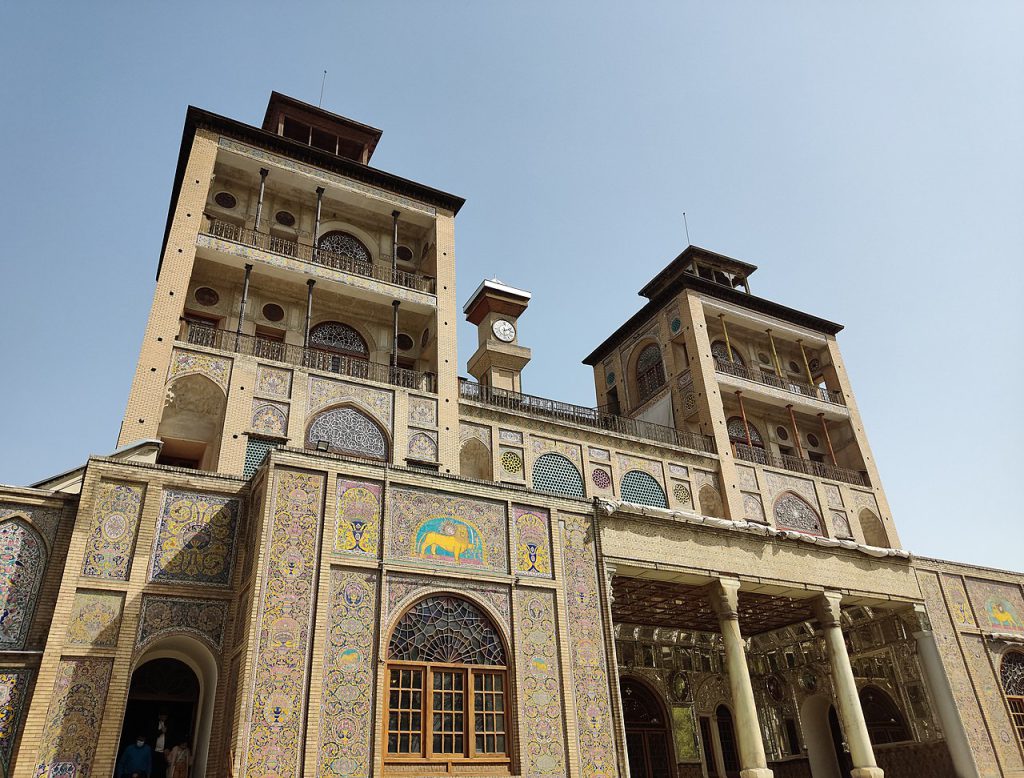Table of Contents
Golestan Palace, located in the bustling city of Tehran, is a stunning blend of traditional Persian architecture and European construction techniques. The palace, also known as the Palace of Flowers, is the epitome of Iran’s artistic and architectural heritage. The palace dates back to almost 400 years and has weathered several dynasties that ruled Iran.
UNESCO declared Golestan Palace a World Heritage Site in 2015, recognizing its significance as a historical masterpiece. The palace complex has been home to many Iranian rulers, most notably the Safavid dynasty in the mid-16th century. The objective behind constructing the palace and fortifying the royal citadel was to ensure maximum protection for the ruling family. Shah Tahmasb saw to the construction of the first defensive wall around Tehran in the 1550s, which protected the palace from enemy invasions for several centuries.
During the Zand dynasty, the palace complex underwent a transformation under the visionary architect Ustad Ghulam Reza Tabrizi. He added an audience chamber, several other buildings, and intricate designs that made the palace more breathtaking. The palace’s unique features include mirror works, dazzlingly painted tiles in the interior, crystal chandeliers, and numerous art treasures. The gardens surrounding the palace feature a combination of Persian and western flora, making it even more alluring.
Golestan Palace represents a fusion of Persian and European architecture, making it a unique masterpiece. The palace’s extensive restoration work during the 18th and 19th centuries integrated European architectural elements, such as the use of cast iron, into classic Persian designs. As a result, the palace boasts a harmonious blend of east-meets-west architecture, representing the best of both worlds.
History of Golestan Palace
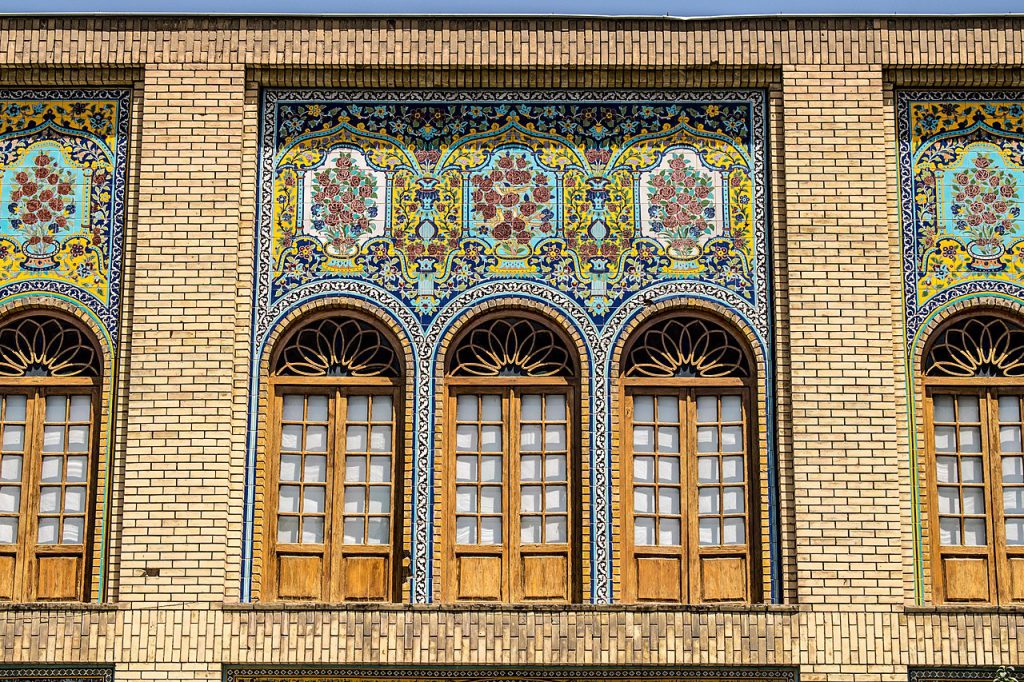
Golestan or Gulistan Palace boasts of a rich history that dates back to the 16th century. Back then, a citadel was built, and it acted as the origin of later constructions and expansions. Karim Khan, the king of Zand dynasty, did some renovations, but the main buildings and changes were not made until the Qajar dynasty took control of Iran.
After Agha Mohammad Khan chose Tehran as his capital in 1794, he made Golestan Palace his official residence and commissioned the construction of several structures within the palace complex. It was during the reign of the Naser al-Din Shah, the 4th king of Qajars, that most of the buildings and palaces were constructed.
To create a lasting legacy in his name, Naser al-Din destroyed most of the older palaces built by the former kings and started new constructions. The architecture of these palaces reflected the European influences that Naser al-Din was exposed to during his visit to Europe, resulting in a unique blend of western and eastern architectural styles.
During the reign of the two Pahlavi kings from 1925 to 1979, they built their own palaces north of Tehran, but Golestan Palace still retained its importance as a site for reception ceremonies for major events. Notably, both King Reza Shah and Mohammad Reza Shah held their coronation ceremonies in the palace.
After the Islamic republic revolution in 1979, the palace complex’s management was given to the cultural heritage and tourism organization, which has since preserved and maintained the historic site as a tourist attraction for visitors from all over the world.
Architecture of Golestan Palace
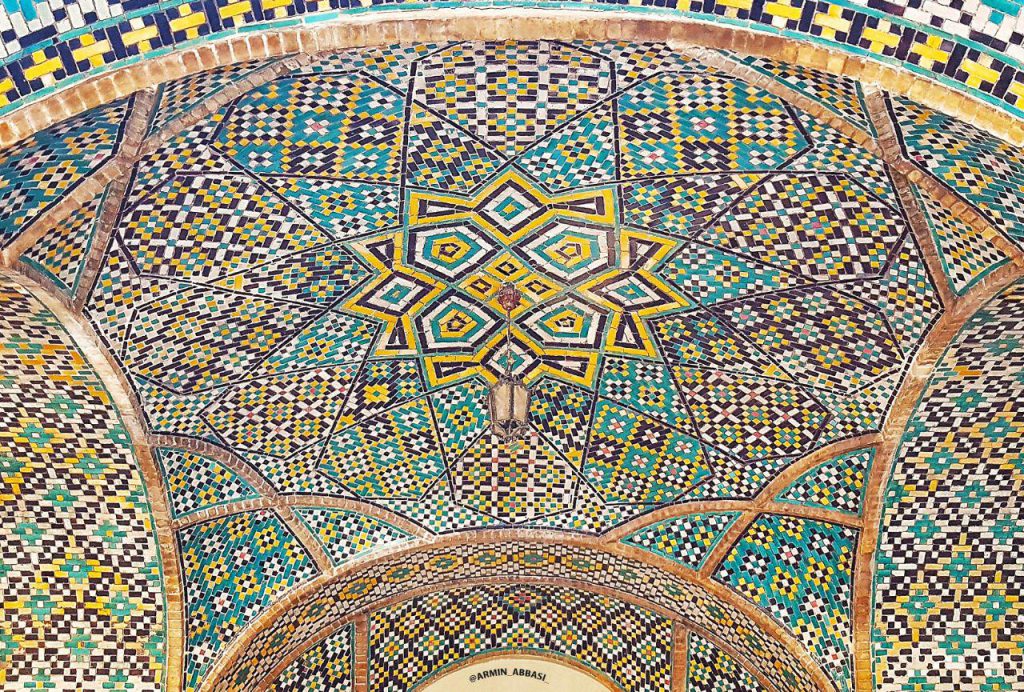
Golestan Palace is a richly diverse architectural masterpiece consisting of several palaces, museums, halls, galleries, and gardens. The design of each section tells its own unique story, incorporating both traditional Persian and Western architectural styles.
The palace’s gardens, in particular, are a feast for the eyes, with beautiful pools and ponds surrounded by stunning exterior decorations made primarily of tile works. Visitors can wander the gardens, taking in the beauty of the surroundings and admiring the artistic talent of ancient Persian craftsmen.
Golestan or Gulistan Palace comprises of eight remarkable structures today, which have each been converted into a museum or garden. Each palace in the complex boasts a unique design that showcases the artistic abilities of ancient Persian craftsmen that used stunning tile works to create intricate patterns and details. Visitors can also walk through the gardens and explore the channel running through the palace, which add to the grandeur of the site.
Different Sections of Golestan Palace
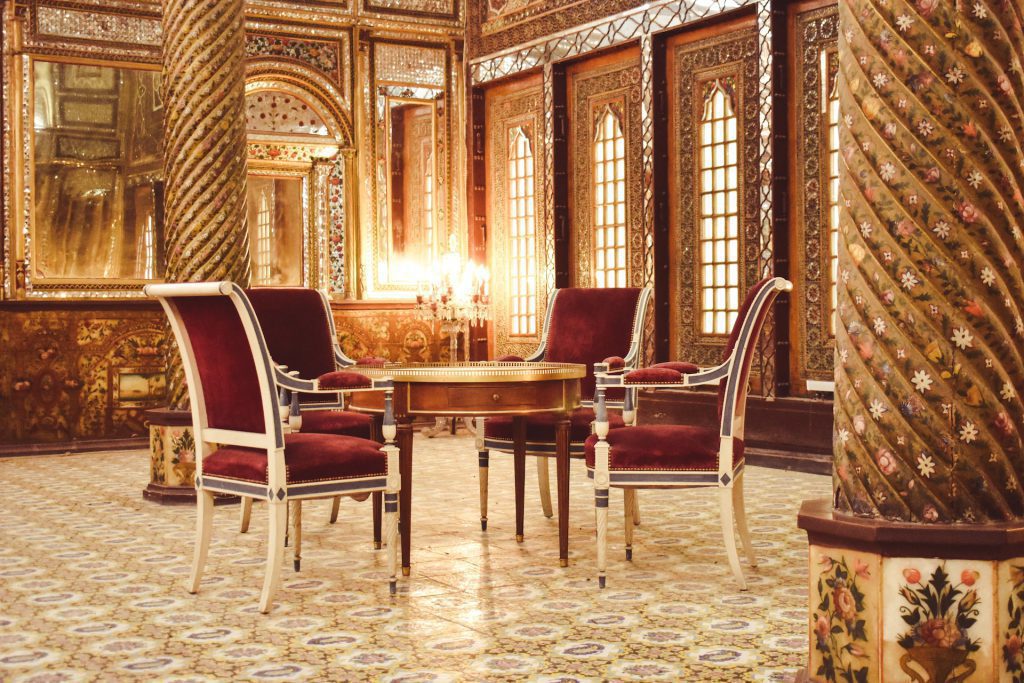
Salam Hall
One of the most impressive attractions in Golestan Palace is the Salam Hall. Originally built as a museum, it became the first museum in Iran and one of the most essential parts of the complex. Naser al-Din Shah ordered the construction of the Salam Hall after his first visit to Europe. He requested a collection of Persian and European paintings, precious gifts received from other countries, and a valuable collection of jewels. Today, the paintings and gifts presented to the Qajar kings remain on display in the Hall.
The Salam Hall takes its name from the “Sun throne,” which was the royal throne of the Qajar kings. The throne was used by the kings during reception ceremonies and special celebrations like Nowruz (Persian new year). Court members and visitors went to the king and greeted him while he was seated on the Sun Throne. Therefore, the Hall was called Salam Hall. The throne was moved to the Royal Jewels Museum at the Central Bank of Iran, where it is now on display.
The Pahlavi kings also made the Salam Hall the venue for their coronation ceremonies, and during each ceremony, the Hall was decorated with a unique style. Today, visitors can see a striking collection of gifts presented to the Qajar kings from across the globe, as well as paintings from famous Iranian painters like Kamal-ol-molk. A visit to the Salam Hall is an unforgettable experience that provides a gateway to Iran’s rich cultural heritage.
Mirror Hall
One of the most remarkable halls in the palace is the Mirror Hall, which boasts thousands of pieces of mirror arranged in a mesmerizing pattern that catches the eyes of visitors. It’s fascinating to learn that the hall’s name is due to the unique Iranian decoration art called “Mirror work.”
The Mirror hall is not only popular for its stunning décor but also because of its historical significance. The famous Iranian painter, Kamal-ol-molk, spent five long years creating a painting that depicts Naser al-Din Shah in this very hall. The painting is now part of the impressive art collection displayed in the Salam Hall, creating a perfect illustration of the rich history and culture of Iran. The captivating beauty and the rich culture of Golestan Palace are a tourist’s dream come true and make it one of the most exceptional destinations in Iran.
Brilliant Hall
Another colorful and remarkable hall at the palace is the Brilliant Hall, known for its spectacular Iranian mirror work decoration. The hall was mainly used for special dining ceremonies and events, adding to its historical and cultural significance. The hall’s beauty and the precise attention to detail leave visitors in awe and wonder, making it one of the most visited areas of the palace.
Windcatcher
One of the most fascinating features of Iranian architecture is the windcatcher, known locally as “Badgir.” The Badgir at Golestan Palace in Tehran is a testament to the ingenuity of Iranian architects of the past. This unique device works as a natural ventilation and cooling system that provides a cool breeze throughout the palace during the hot summer months. Adorned with intricate and colorful mosaic tiles, the Badgir at Golestan Palace is a beautiful example of Iranian architectural beauty and design.
To enhance the cooling effect of the Badgir, a small pool was built in the palace’s underground section. This made the Windcatchers Palace the perfect retreat for the Qajar kings during the hot summer months. Besides its practical benefits, the Badgir at Golestan Palace boasts some of the most stunning examples of Persian art and design. Visiting Golestan Palace gives you a chance to witness beautiful Badgirs and marvel at the rich cultural heritage of Iran.
Shams ol Emareh
Among the magnificent jewels of Golestan Palace lies the Shams ol Emareh or Sun Building, a celebrated architectural masterpiece in Tehran, Iran. It is said that Naser al-Din Shah was inspired to build the Shams ol Emareh after being enchanted by photographs of tall buildings in Europe, and the building’s design was influenced by the Safavid Aali Qapu Palace in Isfahan. Upon completion, Shams ol Emareh became the tallest building in Iran, providing the king with a perfect vantage point to view his empire and the city of Tehran.
Queen Victoria gifted a clock to the Persian king, which was set up on the tower, and its bell’s sound could be heard from afar. Despite being an important symbol of their friendship, the clock’s chimes were too loud and disturbed the royal family’s peace. Despite attempts to lessen its noise, the clock ultimately stopped ticking, yet it still remains on the tower today, attracting countless visitors to the palace.
The Shams ol Emareh has stood the test of time and continues to marvel visitors with its beautiful architecture and impressive design, making it one of the most iconic landmarks in Tehran. No visit to Golestan Palace would be complete without a trip to the magnificent Shams ol Emareh.
Karim Khani Nook
The Karim Khani Nook is a smaller terrace section within the vast and majestic Golestan Palace in Iran, but it holds a deeply significant history that dates back to the founding of the Zand dynasty in 1750. The terrace is believed to be the oldest section of the complex, and it was ordered to be built and used by King Karim Khan.
Despite its smaller size, this terrace is highly revered in Iran’s history as it served as the final resting place of Karim Khan himself. Later, Agha Mohammad Khan, the founder of the Qajar dynasty, ordered that Karim Khan’s body be brought from Shiraz and reburied under the staircase of this very terrace so that he could symbolically walk over him as a new king.
The Karim Khani Nook also boasts a miniature version of the iconic Marble Throne, which is highly regarded for its intricate design and historical significance. Additionally, visitors can also see the exquisite marble tombstone of Naser al Din Shah, which took five long years to be crafted. All in all, this section of Golestan Palace is a must-visit for anyone keen on immersing themselves in Iran’s rich cultural and historical heritage.
Abyaz Hall
The Abyaz Hall is an integral part of the magnificent Golestan Palace in Tehran, Iran. The word “Abyaz” simply means white, and the name aptly captures the main theme of its construction, which was inspired by European architecture that extensively used white as a symbolic color. Naser al-Din Shah commissioned the construction of this palace in the 19th century, as he was inspired by the gifts he received, particularly from the Ottoman Sultan Abdul Hamid. Ultimately, the Abyaz Hall served as an important venue for the royal family’s ceremonies and social events.
Today, the Abyaz Hall has been converted into the Museum of Anthropology in Tehran, and it boasts of some of the most intriguing displays of Iranian art and culture. Visitors can immerse themselves in the history of Iran with the ancient artworks, textiles, and carvings that are on display, giving them insight into the richness of Iranian culture. Whether one is an art enthusiast or a history buff, a visit to the Abyaz Hall is a must as it beautifully showcases the unique mix of European style and Iranian royalty.
The Marble Throne Terrace
When it comes to understanding Iranian culture and history, the Marble Throne Terrace in Golestan Palace is undoubtedly the most significant monument. This terrace dates back several centuries and is adorned with some of the most beautiful paintings, mirrors, tiles, and enamel. However, the true showstopper is the famous marble throne, which was built by Iranian artists using exquisite yellow marble from Yazd.
During the Qajar dynasty, the terrace served primarily as an iconic site for coronation and reception ceremonies. Today, the throne continues to be one of the most important symbols of Iran’s rich history and culture.
How to Get to Golestan Palace
Here are three accessible Tehran public transportation to reach Golestan or Gulistan Palace:
By Metro
Golestan Palace is just a short stroll away from the Panzdah-e Khordad metro station, conveniently located on the red line. Stepping out of the station, you’ll find yourself only minutes from the palace, making it an easy and efficient way to reach the destination.
By Bus
Another option is the Qurkhane Bus Terminal, situated just a 10-minute walk from the palace. This busy hub connects different areas of the city, providing a practical route for visitors arriving by bus.
On Foot
If you’re exploring nearby landmarks like the Grand Bazaar, City Park, or the National Museum, Golestan Palace is within walking distance. The pleasant walk allows you to easily combine your visit to these attractions with a stop at the palace.
Working Hours of Golestan Palace
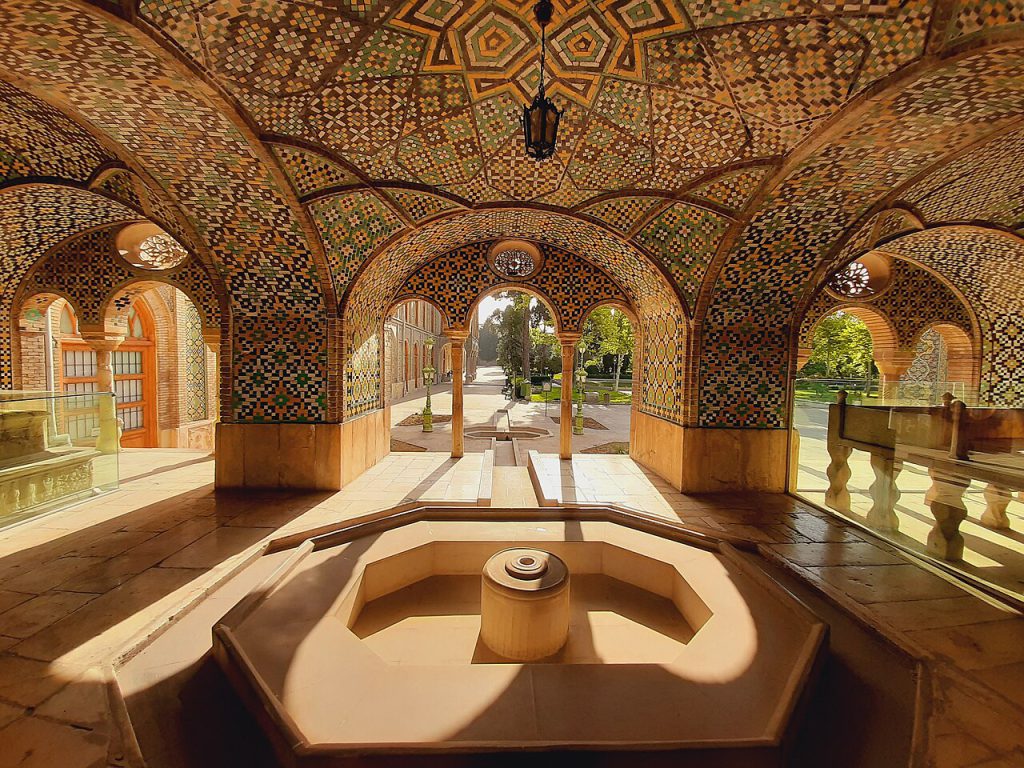
Golestan Palace welcomes visitors every day of the week, opening its doors from 9 A.M. until 4 P.M. This wide availability makes it easy to plan your visit, whether you’re looking to explore on a weekday or during the weekend.
Recommended Sightseeing Time of Golestan Palace
The optimal months to explore Golestan Palace are March, April, September, and October. During these periods, the weather is pleasantly mild, making your stroll through the historic grounds enjoyable. The vibrant blooms of spring and the crisp air of autumn create a picturesque backdrop, enhancing your experience as you wander through this UNESCO World Heritage site.
Plan to dedicate approximately an hour to fully appreciate the palace’s stunning architecture and intricate details. This timeframe allows you to soak in the rich history and artistic splendor without feeling rushed. Whether you’re captivated by the ornate tile work or the lush gardens, an hour is just enough to immerse yourself in the beauty of Golestan Palace.
Where to Eat Near Golestan Palace
When visiting the majestic Golestan Palace, one must indulge in the culinary delights that the surrounding area has to offer.
Moslem Restaurant
For an authentic taste of Iranian cuisine, head to the nearby Grand Bazaar. Weave through the bustling alleys and find yourself at the legendary Moslem Restaurant, a local favorite that serves up mouthwatering kebabs, tender lamb shanks, and fragrant rice dishes. The restaurant’s charm lies in its chaotic energy, where the clatter of plates and the aroma of grilled meats create an unforgettable dining experience.
Sharaf El Islam
Another must-try is Sharaf El Islam, one of the oldest establishments in the bazaar, known for its delectable Iranian kebabs and rice. The establishment exudes a welcoming vibe, making it a favorite among both locals and tourists seeking an authentic culinary experience.
Where to Stay Near Golestan Palace
When visiting the magnificent Golestan Palace in Tehran, finding the perfect accommodation nearby is crucial for a seamless and enjoyable experience.
Ferdowsi International Grand Hotel
For those seeking a luxurious stay, the Ferdowsi International Grand Hotel stands out as a top choice. This elegant establishment boasts spacious rooms, impeccable service, and amenities that cater to the discerning guest. This elegant hotel combines Persian heritage with modern luxury, offering guests a unique experience that reflects the rich culture of Iran. With its spacious lobby adorned with radiant colors and no pillars, the ambiance sets a welcoming tone right from the entrance.
Hanna Boutique Hotel
Another option for those who appreciate refined comfort is the Hanna Boutique Hotel, a newly built property located in the heart of Tehran. The hotel’s interior design is a harmonious mix of tradition and modernity, creating a serene and captivating atmosphere. Guests can expect a tranquil respite from the bustling city, with charming views of the old neighborhood. The rooms are equipped with modern amenities while retaining the feeling of staying in an authentic Iranian house.
Other Attractions Near Golestan Palace
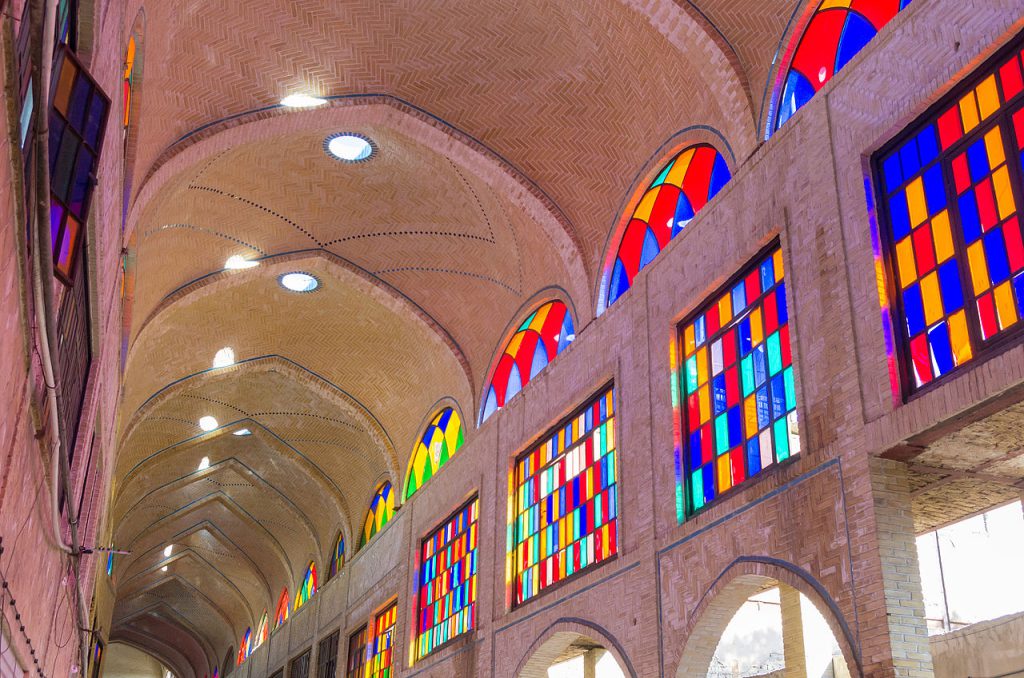
Tehran Grand Bazaar
Just a stone’s throw from Golestan Palace lies the vibrant Tehran Grand Bazaar, a sprawling labyrinth that invites visitors to immerse themselves in the heart of Iranian commerce and culture. Spanning over 10 kilometers, this historic marketplace is a sensory delight, featuring a diverse array of shops selling everything from spices and textiles to exquisite handicrafts and jewelry. The bazaar’s architecture, with its intricate brickwork and vaulted ceilings, tells a story of its evolution from the Safavid era to its prominence during the Qajar dynasty.
National Museum of Iran
A short stroll from the bazaar brings you to the National Museum of Iran, a treasure trove of artifacts that illuminate the rich tapestry of Persian history. This museum houses a vast collection, ranging from prehistoric items to the Islamic period, providing insights into the evolution of Iranian civilization. Each exhibit is meticulously curated, allowing visitors to appreciate the artistry and craftsmanship of ancient artisans. The museum’s serene atmosphere is a perfect contrast to the lively bazaar, making it an ideal spot for reflection and learning.
Negarestan Garden
Nestled in the heart of Tehran, the Negarestan Garden is a true gem that offers a glimpse into Iran’s rich cultural heritage. This historic site, built upon the order of Fath Ali Shah Qajar in the early 18th century, has witnessed numerous significant events throughout its storied past. Today, the Negarestan Garden is home to the Kamal-ol Molk School Museum, showcasing the works of the renowned Iranian artist Mohammad Qaffari and his students. The museum’s collection offers a fascinating glimpse into the artistic traditions of the Qajar era and beyond.
FAQs about Golestan Palace
Q1: Where is Golestan Palace located?
A1: Golestan Palace is located in Tehran, the capital city of Iran.
Q2: What is the historical significance of Golestan Palace?
A2: Golestan Palace holds great historical and cultural significance in Iran. It was the residence of the Qajar dynasty, which ruled Iran from the late 18th to the early 20th century.
Q3: Can you provide some background information about the palace?
A3: Golestan Palace was originally built during the Safavid dynasty in the 16th century, but it was significantly renovated and expanded by the Qajar kings. It served as the royal complex, housing the ruling family and various governmental institutions.
Q4: What are the main attractions within Golestan Palace?
A4: The palace complex consists of several buildings, gardens, and museums. Some of the prominent attractions include the Marble Throne, the Mirror Hall, the Brilliant Hall, the Diamond Hall, and the Museum of Gifts.
Q5: What is the architectural style of Golestan Palace?
A5: Golestan Palace features a unique blend of Persian and European architectural styles. The palace showcases intricate tilework, grand halls, magnificent arches, and beautifully landscaped gardens.
Q6: Are there any UNESCO World Heritage sites within Golestan Palace?
A6: Yes, Golestan Palace was inscribed as a UNESCO World Heritage site in 2013. It was recognized for its outstanding universal value as a masterpiece of the Qajar era and its representation of Persian architectural and artistic traditions.
Q7: Are there any entry fees to visit Golestan Palace?
A7: Yes, there is an admission fee to enter Golestan Palace. The ticket prices may vary for domestic visitors and foreign tourists. It is advisable to check the official website or contact the palace administration for the latest information on ticket prices.
Q8: Is photography allowed inside the palace?
A8: Yes, photography is generally allowed in most areas of Golestan Palace, including the outdoor spaces and some indoor sections. However, there might be restrictions on using flash or tripods in certain sensitive areas. It is best to inquire on-site about any specific photography guidelines.
Q9: Are guided tours available at Golestan Palace?
A9: Yes, guided tours are available at Golestan Palace. Trained guides can provide valuable insights into the history, architecture, and significance of the various buildings and sites within the complex. Guided tours can enhance the visitor experience and offer a deeper understanding of the palace’s rich heritage.
Q10: What are the visiting hours of Golestan Palace?
A10: The visiting hours of Golestan Palace may vary depending on the season and specific days. Generally, the palace is open to visitors from morning until late afternoon. However, it is recommended to check the official website or contact the palace administration to get accurate and up-to-date information on visiting hours.
Last Words: Experience the Best of Golestan Palace with a Customized Tour
Golestan Palace in Tehran is a beautiful mix of traditional Persian and European architecture. Known as the Palace of Flowers, it showcases Iran’s artistic and architectural history. The palace is around 400 years old and has been home to many Iranian rulers, including those from the Safavid dynasty. In 2015, UNESCO recognized Golestan Palace as a World Heritage Site for its historical importance.
If you’re dreaming of experiencing the magnificence of Golestan Palace, there’s no better way than to visit Iran with a Customized tour. At To Iran Tour, we offer Iran tours and travel packages designed by professionals who are passionate about providing unforgettable experiences. Our team is dedicated to crafting itineraries that suit your unique preferences, making sure your journey through Iran is nothing short of exceptional.
Whether it’s exploring Golestan Palace or other cultural treasures, Iran Tours with us will give you the experience of a lifetime. We’re here to help you make your trip to Iran truly memorable!

